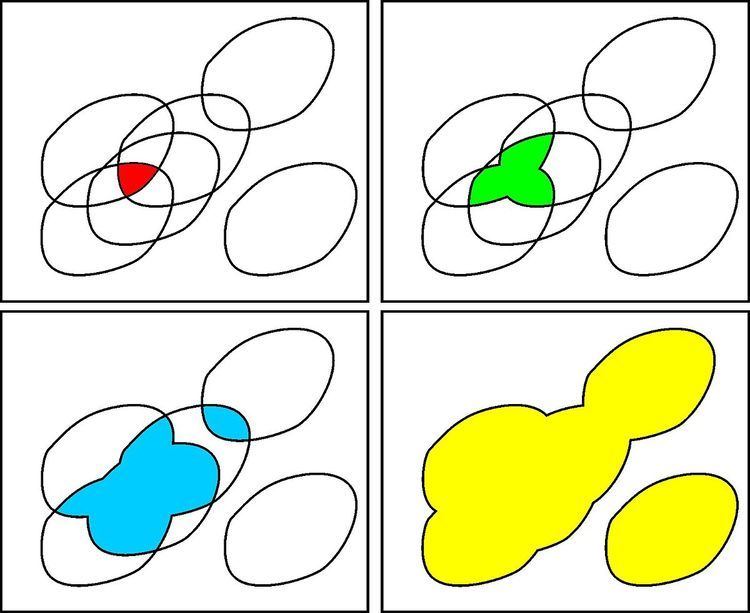 | ||
The relaxed intersection of m sets corresponds to the classical intersection between sets except that it is allowed to relax few sets in order to avoid an empty intersection. This notion can be used to solve Constraints Satisfaction Problems that are inconsistent by relaxing a small number of constraints. When a bounded-error approach is considered for parameter estimation, the relaxed intersection makes it possible to be robust with respect to some outliers.
Contents
Definition
The q-relaxed intersection of the m subsets
Define
We have
Characterizing the q-relaxed intersection is a thus a set inversion problem.
Example
Consider 8 intervals:
We have
Relaxed intersection of intervals
The relaxed intersection of intervals is not necessary an interval. We thus take the interval hull of the result. If
which corresponds to a union of intervals. We then return the smallest interval which contains this union.
Figure 2 shows the function
Relaxed intersection of boxes
To compute the q-relaxed intersection of m boxes of
Relaxed union
The q-relaxed union of
Note that when q=0, the relaxed union/intersection corresponds to the classical union/intersection. More precisely, we have
and
De Morgan's law
If
As a consequence
Relaxation of contractors
Let
is a contractor for
is a contractor for
are contractors for
Combined with a branch-and-bound algorithm such as SIVIA (Set Inversion Via Interval Analysis), the q-relaxed intersection of m subsets of
Application to bounded-error estimation
The q-relaxed intersection can be used for robust localization or for tracking.
Robust observers can also be implemented using the relaxed intersections to be robust with respect to outliers.
We propose here a simple example to illustrate the method. Consider a model the ith model output of which is given by
where
where
The sets
